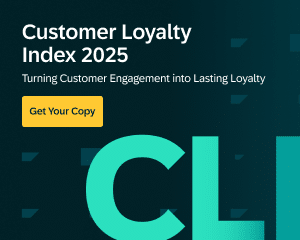Your customers no longer want to wait in a queue, fill out a form, or call a support line to get help. They expect real-time answers, personalized recommendations, and the feeling that a brand truly knows them, whether that response comes from a human or an AI assistant.
To meet those expectations, businesses are rethinking how they handle digital conversations. Two approaches have taken center stage: AI-powered chatbots, which deliver instant support at scale, and conversational live chat, which connects customers with real people for empathy and depth.
Both promise better experiences, but in very different ways. The real question isn’t which is better overall — it’s which is better for your customers, your goals, and your brand context?
In this article, we’ll explore how chatbots and conversational live chat compare across speed, personalization, and scalability. You’ll see where each shines, where they fall short, and how combining both can help you create a seamless, human-feeling experience, powered by the right data and automation behind the scenes.
What Your Customers Expect in 2026
Customer expectations have evolved dramatically in just a few short years. What used to feel like “good service” via quick email replies or short hold times on the phone now feels slow compared to the immediacy of AI chat and messaging apps.
In 2026, customers expect:
- Instant responses: Speed is now non-negotiable. Whether they’re asking about an order, a return, or a product recommendation, customers expect answers in seconds, not hours.
- Personalized experiences: People want support that feels relevant to them and their history, preferences, and behaviors, not generic responses.
- Channel flexibility: They expect to start a conversation on one channel and continue it seamlessly on another, without repeating information.
- Empathy and understanding: Automation is convenient, but customers still value the reassurance that comes from a human touch when they need it.
AI-powered chat and conversational tools are rising to meet these expectations, helping brands connect with customers in the moment, while collecting valuable data that drives future engagement.
Pro Tip: The best customer experience strategies blend automation with personalization. The more your chat systems connect to unified customer data, the more human they feel, even when no human is involved.
Chatbots: Speed, Scale, and Always-On Support
Chatbots have come a long way from the rigid, rules-based scripts of the past. Modern AI-powered chatbots use natural language processing and machine learning to understand context, answer questions, and even anticipate what a customer might ask next.
For brands handling thousands of daily inquiries, chatbots deliver something that humans alone can’t — instant scalability. They never take breaks, they’re available 24/7, and they ensure no customer is left waiting for an answer.
Key advantages of chatbots:
- Speed and convenience: Chatbots provide immediate responses to common questions like order tracking, store hours, or product availability.
- Cost efficiency: Once trained, a chatbot can handle high volumes of requests at a fraction of the cost of a full support team.
- Consistency: Every customer receives the same accurate, brand-approved information, reducing errors and variability.
- Data capture: Each interaction adds to your understanding of customer behavior and intent, which is valuable input for marketing and product teams.
Of course, chatbots have their limits. They can struggle with complex or emotionally nuanced conversations and can frustrate customers if they don’t understand the query. That’s why leading brands increasingly pair automation with human support, letting chatbots manage routine interactions while routing more complex issues to live agents.
How SAP Emarsys helps: The SAP Emarsys Customer Engagement Platform integrates with AI-powered chat systems to deliver context-aware automation. By connecting chatbot interactions with unified customer profiles, you can personalize every response, trigger relevant follow-up messages across channels, and automatically feed insights into campaigns that drive retention and lifetime value.
Conversational Live Chat: Human Empathy and Complex Problem-Solving
While chatbots deliver speed and scale, conversational live chat delivers empathy – the human understanding that technology alone can’t replicate. Live chat connects customers directly with support agents or sales associates in real time, allowing for nuanced, emotional, and personalized conversations that build lasting trust.
When a customer is upset, confused, or making a high-value purchase decision, live chat becomes invaluable. It lets your team respond in context, pick up on tone, and adapt their approach based on the customer’s emotional cues.
Key advantages of conversational live chat:
- Human connection: Agents can empathize, reassure, and personalize in ways that AI cannot.
- Complex issue resolution: Live chat excels at handling multi-layered or unique situations that require judgment and flexibility.
- Relationship building: Personalized support builds loyalty, especially when agents use customer data to anticipate needs or suggest relevant products.
- Higher satisfaction: Customers feel heard, understood, and valued — outcomes that directly improve retention and advocacy.
The main challenge? Scalability. Live chat requires staffing, training, and scheduling, which can limit availability during peak times. But when integrated with AI-powered tools like automated routing or chatbot triage, conversational live chat becomes far more efficient and impactful.
Pro Tip: Equip your agents with unified customer profiles. When your team can instantly see a customer’s purchase history, preferences, and previous interactions, every conversation feels personal and resolution times drop dramatically.
Chatbot vs Conversational Live Chat: Which Is Better?
When it comes to customer experience, both chatbots and conversational live chat have clear strengths, as well as clear limitations. The right choice depends on what your customers need in the moment and how your brand wants to deliver value.
Chatbots excel at speed, scalability, and consistency. They handle FAQs, order tracking, and quick resolutions at any hour, freeing up your team to focus on higher-value conversations.
Live chat, on the other hand, shines when the situation calls for empathy, nuance, or expertise, the kind of human understanding that builds trust and loyalty.
Instead of choosing one over the other, leading brands are combining both. AI-powered chatbots now handle the “what”, like quick answers, recommendations, and data collection, while human agents handle the “why”, covering the emotional context, relationship-building, and personalization.
Factor |
Chatbot |
Conversational Live Chat |
| Availability: | 24/7, instant responses | Limited by team hours |
| Personalization: | AI-driven, rules-based | Emotionally responsive, context-aware |
| Efficiency: | Scalable and consistent | Resource-intensive but adaptable |
| Empathy: | Limited | High |
| Best Use Case: | FAQs, order updates, lead capture | Complex issues, high-value interactions |
The most successful CX strategies don’t choose between chatbots and live chat, instead orchestrating both. The result? Seamless hand-off between automation and human empathy.
The Hybrid Approach: AI + Human Collaboration
In reality, the best customer experiences come from a balance of automation and empathy. A hybrid approach, where chatbots and live agents work together, combines the efficiency of AI with the understanding of human support.
Here’s how it works:
A chatbot engages first, instantly answering FAQs, qualifying leads, or resolving simple issues. If the customer’s need is more complex, the bot transfers the conversation, along with all the context, to a live agent. The agent picks up exactly where the chatbot left off, already equipped with the customer’s history, intent, and sentiment.
This blend creates a frictionless experience for customers and a more efficient workflow for teams. The AI empowers human customer service teams, reducing time spent on repetitive tasks and giving them more bandwidth for high-value interactions.
Key benefits of a hybrid chat model:
- Reduced response times: Chatbots handle the initial triage, so agents can focus on priority cases.
- Seamless hand-offs: Unified data ensures customers never have to repeat themselves.
- Personalized experiences at scale: AI provides insights; agents deliver empathy.
- Higher satisfaction and productivity: Customers feel supported, and teams can resolve more cases in less time.
How SAP Emarsys helps: The SAP Emarsys Customer Engagement Platform enables this hybrid model through real-time data and automation. By unifying chatbot and live-chat interactions within a single customer profile, brands can personalize responses, trigger follow-ups across channels, and measure the impact of every conversation, all in one place.
How to Choose the Right Approach for Your Brand
There’s no universal winner between chatbot and conversational live chat, and the best approach depends on your goals, your customers, and the complexity of your products or services. The key is to align your chat strategy with what your customers value most.
Here’s how to decide which model (or mix) is right for you:
- Start with your goals: If your priority is reducing response time or support costs, start with chatbot automation. If you want to boost satisfaction, retention, or upselling, lean more heavily on live chat.
- Assess your customer journey: Look at where chat can add the most value. Chatbots often work best at the discovery and post-purchase stages, while live chat excels during consideration and problem-resolution moments.
- Evaluate your data maturity: The more unified your customer data, the more effective your chat strategy will be. AI chatbots become smarter and more accurate when they draw from rich, first-party data.
- Blend the two: Many brands begin with chatbot automation to cover high-volume queries, then layer in live chat for high-touch or complex interactions. This creates scalability without sacrificing personalization.
Pro Tip: Whichever route you take, connect your chat tools to your broader engagement ecosystem. When your chatbot and live-chat systems sync with your email, mobile, and loyalty channels, you’ll deliver conversations that feel consistent and connected — no matter where they start.







